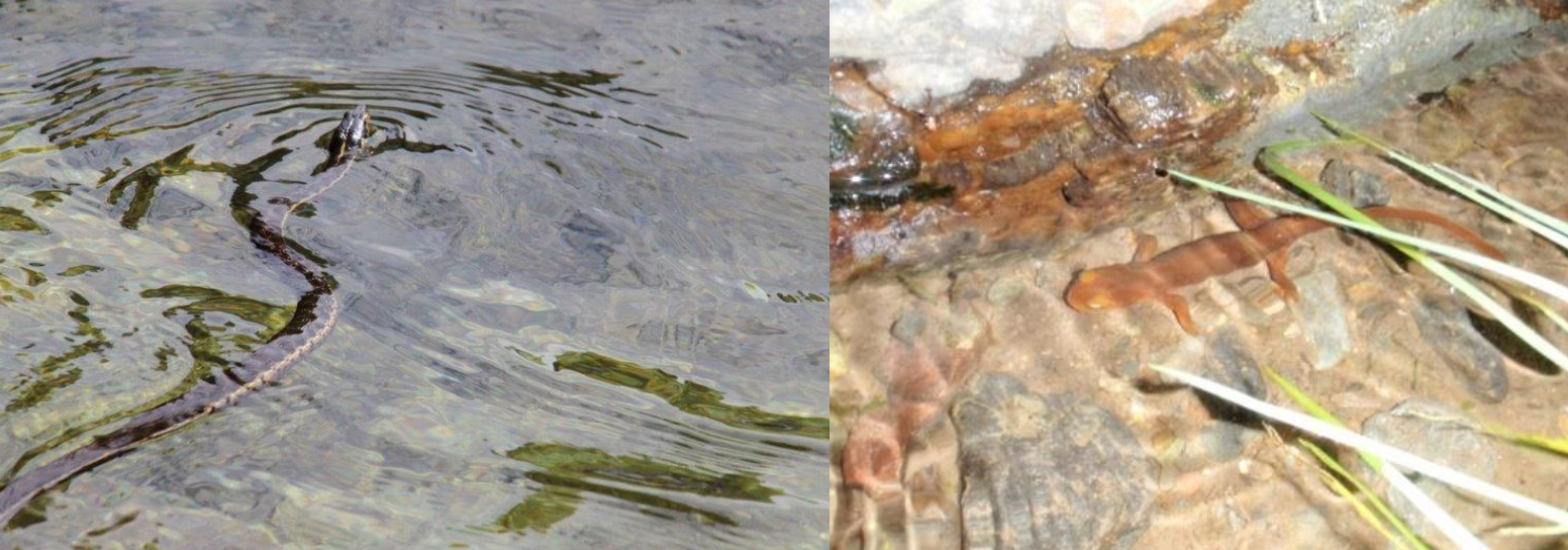
In the Tuolumne River watershed, there is a co-evolutionary arms race occurring between the Sierra garter snake (Thamnophis couchii) and the Sierra newt (Taricha sierrae) and it has become apparent that the Sierra garter snake is winning.
The Sierra newt is an amphibious species whose conspicuous orange coloration provides a warning signal to predators (Petranka, 1998). This animal produces a potent neurotoxin called tetrodotoxin, which if ingested, binds to sodium ion channels in nerves and muscles, causing imminent mortality (Brodie, 2005). It is this molecular mechanism that allows the newt, which is slow-moving and often found out in exposed, shallow pool habitat, to avoid predation by almost all animals occupying higher trophic levels ―except for one.
The Sierra garter snake has evolved an elevated resistance to tetrodotoxin, which prevents the toxin from binding to its pores. The deadly toxin is considered to be the phenotypic interface of interactions between these two species that has allowed them to co-evolve via natural selection. In other words, this example of a parallel “arms race” between predator and prey demonstrates that co-evolution of two species surrounding a toxin has been a result of each species having the genetic ability to respond and reciprocate to selection (Brodie et al., 2005).
If you are planning to go ‘herping,’ or searching for reptiles and amphibians, on the Tuolumne River, the following words of advice should be followed. Sierra newts can be found in abundance during their breeding season, January through May, in a small tributary that is located on the other side of the river from the frequently visited campsite Indian Creek. Sierra garter snakes can be spotted throughout the year alongside stream margins, foraging in shallow side pools, and sunning themselves on rocks. During this study, many Sierra garter snakes were found in the Clavey River tributary, another common stopping point for river rafters.
Citations:
Brodie et al. (2005). Parallel arms race between garter snakes and newts involving tetrodotoxin as the phenotypic interface of coevolution. Journal of Chemical Ecology, Vol. 31, No. 2, February 2005.
Petranka, J.W. (1998). Salamanders of the United States and Canada. Smithsonian Institution Press, Washington D.C.
